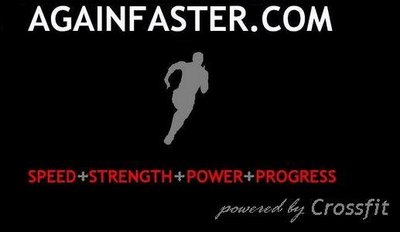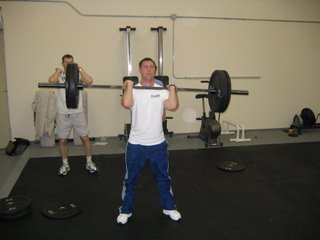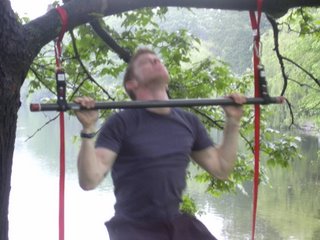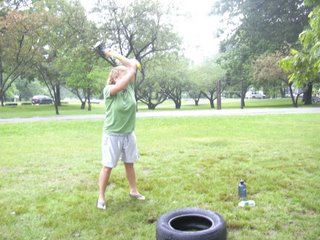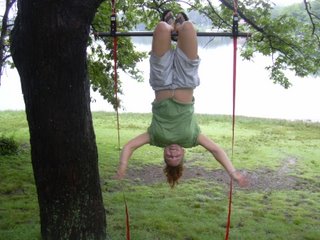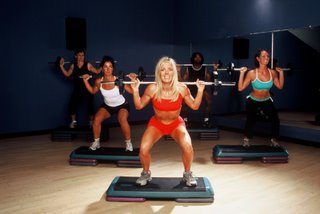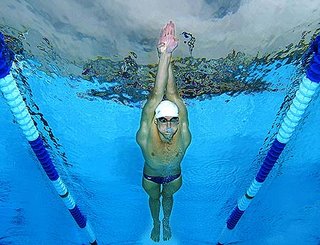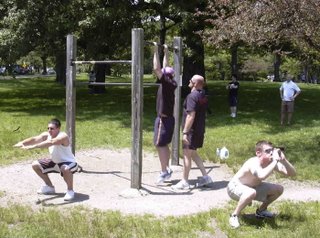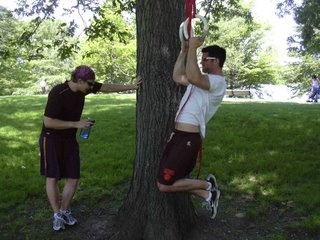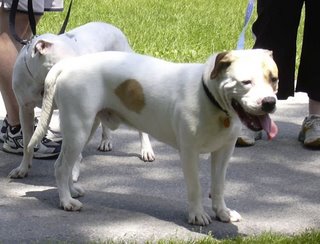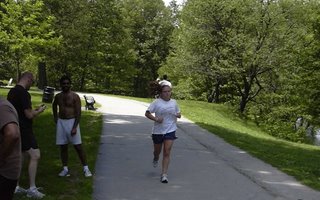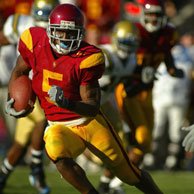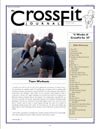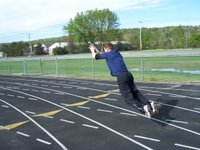Two days ago, I published this article with pictures taken in Quincy Quarry by Mr. John Knight. I neglected to credit John, or mention the location of the photographs. I did not intend to mislead, and I apologize.
Again Faster will adhere to the highest ethical standards, regardless of the stakes.
Error by omission is not one of our standards. I will not make this mistake in the future.
Thanks to John for the amazing photographs from the last version of this article. I will re-publish these pictures in an appropriate piece, with proper attribution. The pictures in this article were taken at Hammond Pond by the author (and his girl) on June 27, 2006.
Learning the Ropes

In most athletic endevours, aggression is rewarded. In others, it's a cardinal sin.
On Tuesday night, Sam and I made the trip to Hammond Pond off of Route 9. Tucked away behind the Chestnut Hill Mall, ten rock climbers were scaling 30 vertical feet of puddingstone. In the urban jungle, it's the closest thing to a cliff.
I was coming off six straight days of Crossfit. I felt like sh*t, and a couple of items from the stress list were creeping up on me.
When we arrived, John and Marcia were finishing a climb.
He helped me tie in to the top rope, and I contemplated the fissure in front of me for a few seconds.
"Am I on belay?"
"You are."
"Climbing."
"Climb away."
I jammed my right foot and left hand into the face, and made a move. The rock was soaked. I stood two feet off the ground. Grabbing another hold, I attempted to weight my left foot.
My body wasn't having it. Every second of stress I'd inflicted on my body in the last week came crashing down, and I fell off the rock.
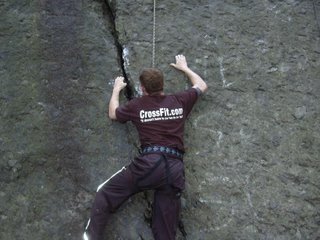 I tried to get that second move two more times. With each attempt, I became angrier and more aggressive. I ended up at the bottom, my safety knot clenched into a tiny ball.
I tried to get that second move two more times. With each attempt, I became angrier and more aggressive. I ended up at the bottom, my safety knot clenched into a tiny ball.Disgusted, I took the rope off my harness, brusquesly told John, "It's not happening today."
I went to sulk on a nearby log. Thankfully, everyone ignored me.
I sat there, watching Sam climb the route I'd just written off, moving quickly and gracefully. The further up the rock she went, the more embarassed I got. I'd just allowed bodily fatigue and momentary failure to put me on the sideline. I was surrounded by good friends, and I was pissing it away.
Nick looked over from a setup further down the wall. "Hey, Gilson. Wanna try this one?"
John made eye contact with Nick, and shook his head. I didn't say a word. John has wisdom and patience, while I typically have rash impulses and anti-social tendencies. He knew what he was doing, and I had the good sense to keep my mouth shut.
After a few minutes, John gestured toward the wall, and asked me if I was ready to go again. I was. As I strapped on my rock shoes, Sam came over and asked if I was alright.
"No way I'm getting beat by a f*cking rock. Not today."
"Not ever," she said, and smiled. Sammy has unshakeable faith.
Once again I stood facing the wall, tied into the belay rope. John and I went through the climbing Q and A, and I put my hand on the rock.
"Don't let it frustrate you," he said quietly. "If it does, just let it go."
Instead of attacking the rock, I considered my hold carefully, and moved when it felt right. The tension that had caused me to shake was gone--my embarassment had drowned it.
I held the rock, letting it support my weight.
Each solid move brought more confidence. Foot, foot. Hand, hand. Foot, hand, foot. I found myself at the top, preparing to rappel.
I tackled a couple other routes that evening. None of them were hard. Not even close. The puddingstone at Hammond Pond is littered with deep holds and vertical fissures.
The trouble with my first climb wasn't the rock. It wasn't the route, and it wasn't the rain water. It was my head.
Rock climbing requires a combination of balance and calm. There's no place for stress and aggression, and I'd tried to impose both of those feelings on the rock. It rewarded me with a quick trip to the bottom.
I once read that success comes from experience, and experience comes from failure. Next time I get hit with failure, I'm going to take a page out of John's book.
I'll just let it go.
